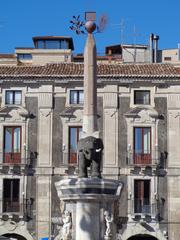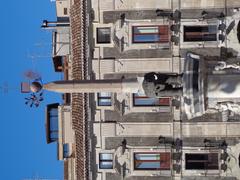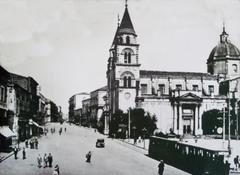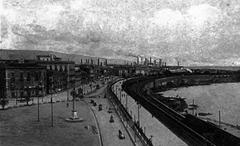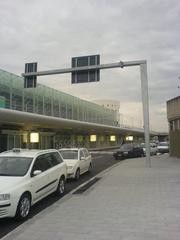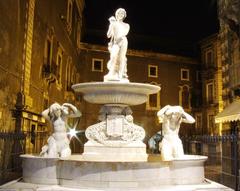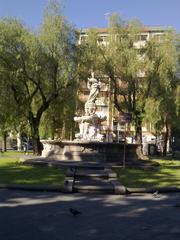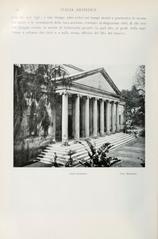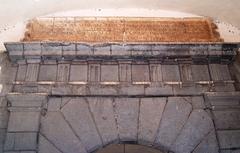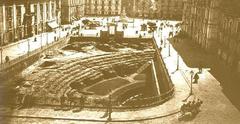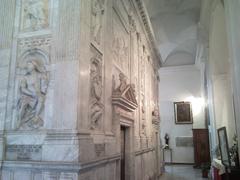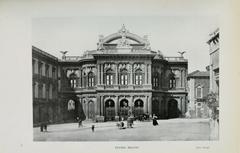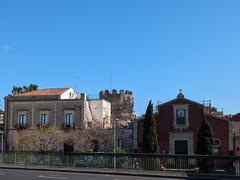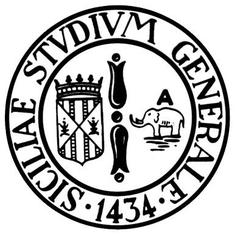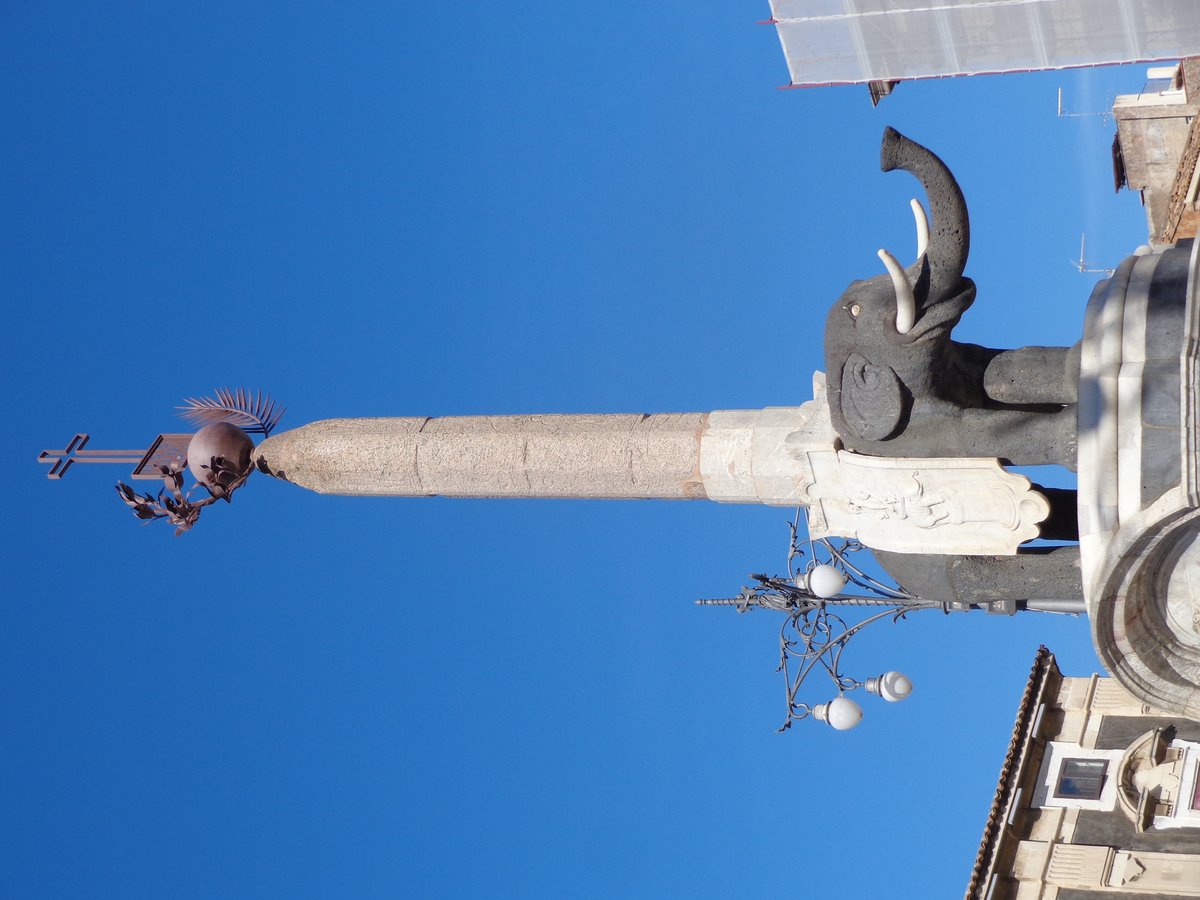
Visiting Fontana dell’Elefante: Hours, Tickets, and Tips
Date: 18/07/2024
Introduction
The Fontana dell’Elefante, or Elephant Fountain, is not just a striking architectural marvel but also a symbol of Catania’s resilience and rich cultural heritage. Situated in the bustling Piazza del Duomo, this iconic monument has fascinated locals and tourists alike for centuries. Designed by the renowned architect Giovanni Battista Vaccarini in 1736, the fountain incorporates an ancient lava stone elephant, known locally as ‘u Liotru,’ and an Egyptian obelisk, creating a unique blend of artistic and historical elements. The origins of the elephant statue are shrouded in mystery, with theories suggesting Roman or Byzantine roots. The monument has endured several natural disasters, including the catastrophic earthquake of 1693 and numerous eruptions from Mount Etna, making it a testament to the city’s enduring spirit. Visitors can explore the fountain 24/7, with no admission fees, making it an accessible and budget-friendly attraction (Discover the Fontana dell’Elefante - History, Visiting Hours, and Tickets in Catania, Visiting Fontana dell’Elefante in Catania - History, Tickets, and Tips, Complete Guide to Visiting Fontana dell’Elefante in Catania - Tips, History, and Nearby Attractions).
Table of Contents
- Introduction
- Origins and Construction
- Symbolism and Legends
- Architectural Features
- Historical Significance
- Preservation and Restoration
- Visitor Information
- Nearby Attractions
- Dining Options
- Safety Tips
- Local Customs and Etiquette
- FAQ
- Conclusion
Origins and Construction
The Fontana dell’Elefante, or Elephant Fountain, is a prominent landmark in Catania, Italy. It was constructed in 1736 by the architect Giovanni Battista Vaccarini, who was commissioned to redesign the Piazza del Duomo after the devastating earthquake of 1693. The fountain features an ancient lava stone elephant, known locally as “u Liotru,” which is believed to date back to the Roman or Byzantine period. The elephant is surmounted by an Egyptian obelisk, creating a unique blend of cultural elements.
Symbolism and Legends
The elephant statue, “u Liotru,” is steeped in local legend and folklore. One popular story attributes the statue to a nobleman named Heliodorus, who was said to have magical powers. Another interpretation relates to its supposed protective powers, with the statue intended to safeguard the city from natural disasters, particularly eruptions from Mount Etna.
Architectural Features
The Fontana dell’Elefante is a striking example of Baroque architecture. The black lava stone elephant stands on a white marble pedestal adorned with intricate carvings and reliefs. The obelisk on the elephant’s back is made of red granite and inscribed with hieroglyphs of religious significance.
Historical Significance
The Fontana dell’Elefante holds significant historical importance for Catania. Its construction marked a period of reconstruction and renewal following the catastrophic earthquake of 1693. The fountain has survived numerous natural disasters and remains a central feature of Catania’s urban landscape.
Preservation and Restoration
Given its age and historical significance, the Fontana dell’Elefante has undergone several restoration efforts. Notable restorations took place in the early 20th century and more recently in 2013, funded by the Italian government and local authorities, to ensure the fountain remains a vibrant landmark for future generations.
Visitor Information
Best Time to Visit
The Fontana dell’Elefante is located in the heart of Catania’s historic center, making it easily accessible to visitors. The best time to visit is during the early morning or late afternoon when the piazza is less crowded, allowing for a more intimate experience. The fountain is illuminated at night, offering a different perspective and a beautiful photo opportunity.
Getting There
Fontana dell’Elefante is situated in Piazza del Duomo, the main square of Catania. The square is easily accessible by various modes of transportation:
- By Air: The nearest airport is Catania-Fontanarossa Airport, approximately 6 km from the city center. From the airport, you can take a taxi or the AMT Alibus service, which runs every 20 minutes and costs around €4.
- By Train: Catania Centrale is the main train station, located about 1.5 km from Piazza del Duomo. From the station, you can either walk (approximately 20 minutes) or take a local bus.
- By Bus: Several local buses operated by AMT (Azienda Metropolitana Trasporti) stop near Piazza del Duomo. Bus lines 431N and 439 are particularly convenient.
Entry and Accessibility
The Fontana dell’Elefante is an open-air monument, and there is no entry fee to view it. The piazza is accessible 24/7, but it is recommended to visit during daylight hours for the best experience and safety. While there are no specific entry tickets for the fountain, some guided tours may include it as part of a ticketed package. The piazza is generally wheelchair accessible, but it is always good to check with tour operators for specific accessibility features.
Guided Tours
For a more in-depth understanding of the Fontana dell’Elefante and its historical context, consider joining a guided tour. Many local tour operators offer walking tours that include the fountain as part of a broader exploration of Catania’s historical center. Prices for these tours typically range from €15 to €30 per person. Some recommended tour operators include:
- Catania Tour: Offers a comprehensive walking tour of Catania, including the Fontana dell’Elefante. More information can be found on their website.
- Sicily Excursions: Provides various tours around Catania, with knowledgeable guides who delve into the history and significance of the fountain. Details are available on their website.
Photography Tips
The Fontana dell’Elefante is a popular subject for photography, thanks to its unique design and historical significance. Here are some tips for capturing the best shots:
- Golden Hour: Visit during the early morning or late afternoon when the light is softer and casts a warm glow on the fountain.
- Angles: Experiment with different angles to capture the fountain’s details, such as the elephant statue and the obelisk. A low angle can make the monument appear more imposing.
- Surroundings: Include the surrounding architecture of Piazza del Duomo in your shots to provide context and enhance the composition.
Nearby Attractions
While visiting the Fontana dell’Elefante, take the opportunity to explore other nearby attractions in Piazza del Duomo:
- Catania Cathedral (Duomo di Catania): Located adjacent to the fountain, this stunning cathedral is dedicated to Saint Agatha, the patron saint of Catania. The cathedral’s baroque architecture and rich history make it a must-visit. More information can be found on the official website.
- Palazzo degli Elefanti: This historic building, now serving as the town hall, is located on the opposite side of the piazza. Its elegant façade and grand interiors are worth a visit.
- La Pescheria (Fish Market): Just a short walk from the piazza, this bustling market offers a glimpse into local life and a chance to sample fresh seafood. The market is open every morning except Sundays.
Dining Options
After exploring the Fontana dell’Elefante and its surroundings, enjoy a meal at one of the many nearby restaurants and cafes:
- Trattoria da Antonio: Known for its traditional Sicilian cuisine, this restaurant offers a cozy atmosphere and delicious dishes such as pasta alla Norma and fresh seafood. More details can be found on their website.
- Caffè del Duomo: Located right on Piazza del Duomo, this café is perfect for a quick coffee or a light snack while enjoying views of the fountain and the cathedral.
- Osteria Antica Marina: Situated near the fish market, this restaurant specializes in seafood and offers a range of local dishes. Reservations are recommended, and more information is available on their website.
Safety Tips
While Catania is generally a safe city, it’s always wise to take some precautions:
- Pickpocketing: Be aware of your surroundings and keep an eye on your belongings, especially in crowded areas like Piazza del Duomo.
- Nighttime Safety: While the piazza is well-lit and generally safe, it’s best to stay in well-populated areas and avoid walking alone late at night.
- Emergency Numbers: In case of an emergency, dial 112 for police, 118 for medical emergencies, and 115 for fire services.
Local Customs and Etiquette
Understanding local customs can enhance your visit to Catania:
- Greetings: Italians typically greet each other with a handshake or a kiss on both cheeks. A simple “Buongiorno” (Good morning) or “Buonasera” (Good evening) is polite.
- Dress Code: While casual attire is acceptable, dressing modestly is appreciated, especially when visiting religious sites like the Catania Cathedral.
- Dining Etiquette: Italians take their meals seriously. It’s customary to wait for everyone to be served before starting to eat, and tipping is appreciated but not obligatory.
FAQ
- What are the visiting hours for Fontana dell’Elefante? The Fontana dell’Elefante is an open-air monument and can be visited at any time. However, it is best to visit during daylight hours for safety and the best experience.
- Is there an entry fee to visit Fontana dell’Elefante? No, there is no entry fee to view the Fontana dell’Elefante.
- Are there any special events held at Fontana dell’Elefante? While the fountain itself does not host events, Piazza del Duomo often hosts local festivals and events, which can provide a vibrant backdrop to your visit.
- Is Fontana dell’Elefante wheelchair accessible? The piazza is generally wheelchair accessible, but it is always good to check with tour operators for specific accessibility features.
- Can I take guided tours that include Fontana dell’Elefante? Yes, many local tour operators offer guided tours that include Fontana dell’Elefante as part of their itinerary.
Conclusion
The Fontana dell’Elefante stands as a resilient symbol of Catania’s rich history and cultural diversity. From its mysterious origins and architectural grandeur to its significant role in local folklore, the fountain offers a fascinating glimpse into the city’s past. Visitors can enjoy the monument at any time of day, with the surrounding Piazza del Duomo offering additional attractions such as the Catania Cathedral and Palazzo degli Elefanti. Whether you’re a history buff, an architecture enthusiast, or simply a curious traveler, the Fontana dell’Elefante is a must-visit landmark that encapsulates the spirit of Catania. Don’t miss the opportunity to explore this iconic monument and delve into the captivating history of this vibrant city (Discover the Fontana dell’Elefante - History, Visiting Hours, and Tickets in Catania, Visiting Fontana dell’Elefante in Catania - History, Tickets, and Tips, Complete Guide to Visiting Fontana dell’Elefante in Catania - Tips, History, and Nearby Attractions).
References
- Discover the Fontana dell’Elefante - History, Visiting Hours, and Tickets in Catania, 2024, Author https://www.catania.it
- Visiting Fontana dell’Elefante in Catania - History, Tickets, and Tips, 2024, Author https://www.sicilyexcursions.com
- Complete Guide to Visiting Fontana dell’Elefante in Catania - Tips, History, and Nearby Attractions, 2024, Author https://www.visitsicily.info/en/

